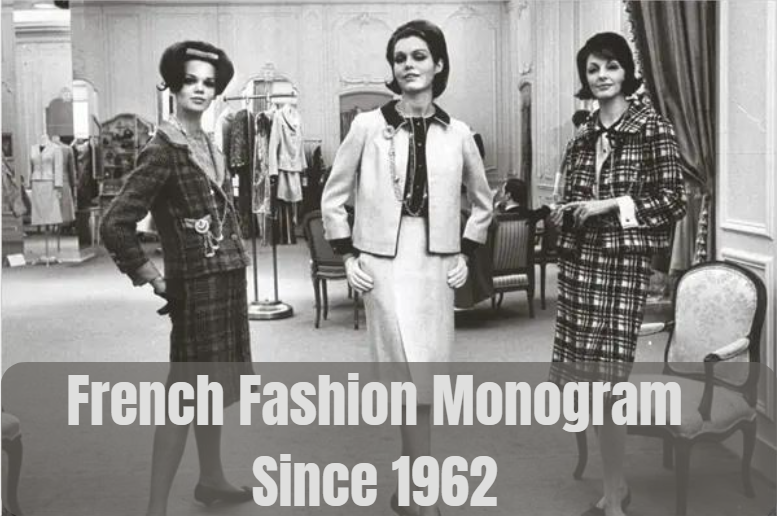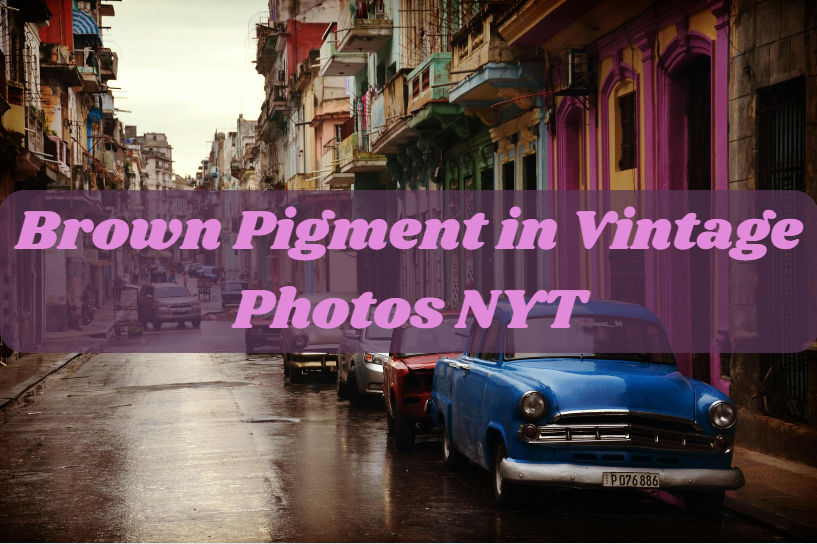French fashion is renowned for its timeless elegance, luxury, and innovation. Among the most significant contributors to the global fashion landscape is the concept of the “French fashion monogram,” a design element that represents the pinnacle of Parisian haute couture. Since 1962, when Yves Saint Laurent opened his own fashion house, the French fashion monogram has become a symbol of sophistication, representing more than just a brand—it encapsulates an era, a lifestyle, and a sense of identity.
In this article, we explore the evolution of the French fashion monogram since 1962, its significance in the fashion world, and the role that iconic French fashion houses like Yves Saint Laurent, Chanel, and Louis Vuitton have played in popularizing this art form. We will also delve into how the French fashion monogram has shaped the global fashion industry, influenced design trends, and become a cultural symbol that extends beyond fashion.
Contents
The Birth of the French Fashion Monogram in 1962
Yves Saint Laurent and the Dawn of a New Era
The year 1962 marked a significant turning point in French fashion history. It was the year when Yves Saint Laurent, one of the most celebrated designers of the 20th century, opened his eponymous fashion house in Paris. Saint Laurent’s rise to fame had already begun during his tenure at Dior, where he succeeded Christian Dior as the head designer at just 21 years old. However, it was his decision to launch his own brand that cemented his place as a revolutionary figure in fashion.
One of Saint Laurent’s major contributions to fashion was his redefinition of the French fashion monogram. The monogram, typically consisting of a designer’s initials or a brand’s insignia, became more than a mere logo under Saint Laurent’s influence. It was transformed into a statement of luxury, power, and modernity. The “YSL” monogram, designed by graphic artist Cassandre, epitomized this shift, with its sleek, intertwined letters embodying both tradition and avant-garde aesthetics.
The YSL Monogram: A Revolutionary Design
The YSL monogram quickly became iconic, not just in France but around the world. Its bold yet elegant design reflected Saint Laurent’s innovative approach to fashion, which fused classic tailoring with modern sensibilities. The monogram appeared on everything from clothing to accessories and perfume bottles, becoming synonymous with luxury and Parisian chic.
Yves Saint Laurent’s monogram was not just a marketing tool; it represented a new philosophy in fashion. Saint Laurent believed that high fashion should be accessible, and his designs often blurred the lines between haute couture and ready-to-wear. The YSL monogram became a symbol of this democratization of fashion, appealing to both the elite and everyday consumers.
The Rise of the French Fashion Monogram in the 1960s and 1970s
The 1960s and 1970s were a period of great change in the fashion industry. As the world underwent social and political upheaval, fashion designers began to experiment with new forms, materials, and concepts. The French fashion monogram, once a simple branding element, evolved into a powerful symbol of cultural identity and artistic expression.
During this time, other French fashion houses began to embrace the monogram trend. Chanel, under the leadership of Karl Lagerfeld, reimagined its iconic double “C” monogram, which had been created by Coco Chanel in the 1920s. Lagerfeld’s modernization of the monogram helped to solidify Chanel’s position as one of the most influential fashion brands in the world. The double “C” became a symbol of timeless elegance, representing both the brand’s heritage and its forward-thinking approach to fashion.
Similarly, Louis Vuitton, which had been using its “LV” monogram since the late 19th century, experienced a resurgence in popularity during the 1960s and 1970s. The brand’s iconic monogram canvas became a status symbol, adorning everything from luggage to handbags. Louis Vuitton’s monogram, like that of YSL and Chanel, represented more than just a brand—it became a cultural icon, associated with luxury, exclusivity, and the art of travel.
The Cultural Impact of the French Fashion Monogram
The Monogram as a Status Symbol
By the late 20th century, the French fashion monogram had become a powerful status symbol. Wearing a monogrammed piece from a prestigious fashion house signaled not only wealth and taste but also an affiliation with a particular cultural and social elite. The French fashion monogram became a way for individuals to express their personal style while also aligning themselves with the values and aesthetics of iconic fashion houses.
This cultural significance extended beyond France. In the United States, where fashion had long been influenced by European trends, the French fashion monogram became a marker of sophistication and global citizenship. Celebrities, socialites, and fashion enthusiasts in the USA embraced monogrammed fashion items, further cementing their status as symbols of luxury and refinement.
Monograms and Identity
The French fashion monogram also plays a role in shaping personal and brand identities. For consumers, owning a monogrammed item can be a way to express individuality while also connecting to a larger cultural narrative. The monogram becomes a part of the wearer’s identity, a reflection of their taste, values, and aspirations.
For brands, the monogram is a key element of their identity. It serves as a visual representation of the brand’s history, philosophy, and aesthetic. The French fashion monogram is often used to convey the essence of a brand in a single, instantly recognizable symbol. For example, the YSL monogram reflects Yves Saint Laurent’s commitment to elegance, innovation, and inclusivity, while the Chanel double “C” represents the brand’s dedication to timeless sophistication and understated luxury.
The Evolution of the Monogram in the Digital Age
In recent years, the French fashion monogram has evolved to meet the demands of the digital age. With the rise of social media and e-commerce, fashion brands have had to adapt their marketing strategies to reach a global audience. The monogram, once a physical symbol on clothing and accessories, has taken on new life in the digital realm.
Luxury brands now use their monograms in digital advertising campaigns, social media posts, and online retail platforms. The monogram has become a tool for engaging with consumers in the digital space, where visual branding is more important than ever. French fashion houses have embraced this shift, using their iconic monograms to create a sense of continuity and brand loyalty in an increasingly fragmented market.
The Legacy of the French Fashion Monogram
Yves Saint Laurent’s Enduring Influence
Yves Saint Laurent’s impact on the fashion world extends far beyond his groundbreaking designs. His approach to the French fashion monogram has had a lasting influence on the industry, inspiring generations of designers to rethink the role of branding in fashion. Saint Laurent’s monogram, with its bold simplicity and modern elegance, set a new standard for how fashion houses could use visual symbols to communicate their identity and values.
Saint Laurent’s legacy is evident in the continued success of the YSL brand, which remains one of the most respected and influential fashion houses in the world. The YSL monogram continues to be a symbol of luxury, innovation, and timeless style, proving that great design can stand the test of time.
The Future of the French Fashion Monogram
As fashion continues to evolve, the French fashion monogram remains a vital part of the industry’s identity. While trends come and go, the monogram’s enduring appeal lies in its ability to adapt to changing times while maintaining a connection to tradition. Whether it appears on a classic handbag, a cutting-edge digital campaign, or a piece of wearable technology, the French fashion monogram will continue to be a symbol of elegance, innovation, and cultural significance.
In the future, we can expect to see even more creative uses of the monogram as fashion houses experiment with new technologies and materials. From sustainable fashion to virtual reality, the monogram will continue to evolve, reflecting the changing landscape of the fashion industry while remaining a timeless symbol of French luxury.
FAQs About French Fashion Monogram Since 1962
1. What is the significance of the French fashion monogram?
The French fashion monogram represents the brand’s identity and values through a simple yet powerful visual symbol. It is often associated with luxury, sophistication, and cultural significance.
2. Why did Yves Saint Laurent’s monogram become so iconic?
Yves Saint Laurent’s monogram became iconic because of its bold, modern design that reflected the brand’s innovative approach to fashion. The monogram symbolized luxury and accessibility, making it appealing to a broad audience.
3. How has the French fashion monogram evolved in the digital age?
In the digital age, the French fashion monogram has become an important tool for branding in online spaces. Luxury brands use their monograms in digital advertising, social media, and e-commerce to engage with a global audience and maintain brand continuity.
4. Which other French fashion houses are known for their monograms?
Other French fashion houses known for their monograms include Chanel, with its iconic double “C,” and Louis Vuitton, with its “LV” monogram. These monograms are symbols of luxury and have become cultural icons in their own right.
5. What does the future hold for the French fashion monogram?
The French fashion monogram is expected to continue evolving as fashion houses experiment with new technologies and trends. It will likely remain a symbol of luxury and innovation, adapting to the changing needs of the fashion industry while maintaining its timeless appeal.
Conclusion
The French fashion monogram since 1962 has left an indelible mark on the fashion industry. From Yves Saint Laurent’s revolutionary “YSL” monogram to the enduring symbols of Chanel and Louis Vuitton, these monograms have become cultural icons.




